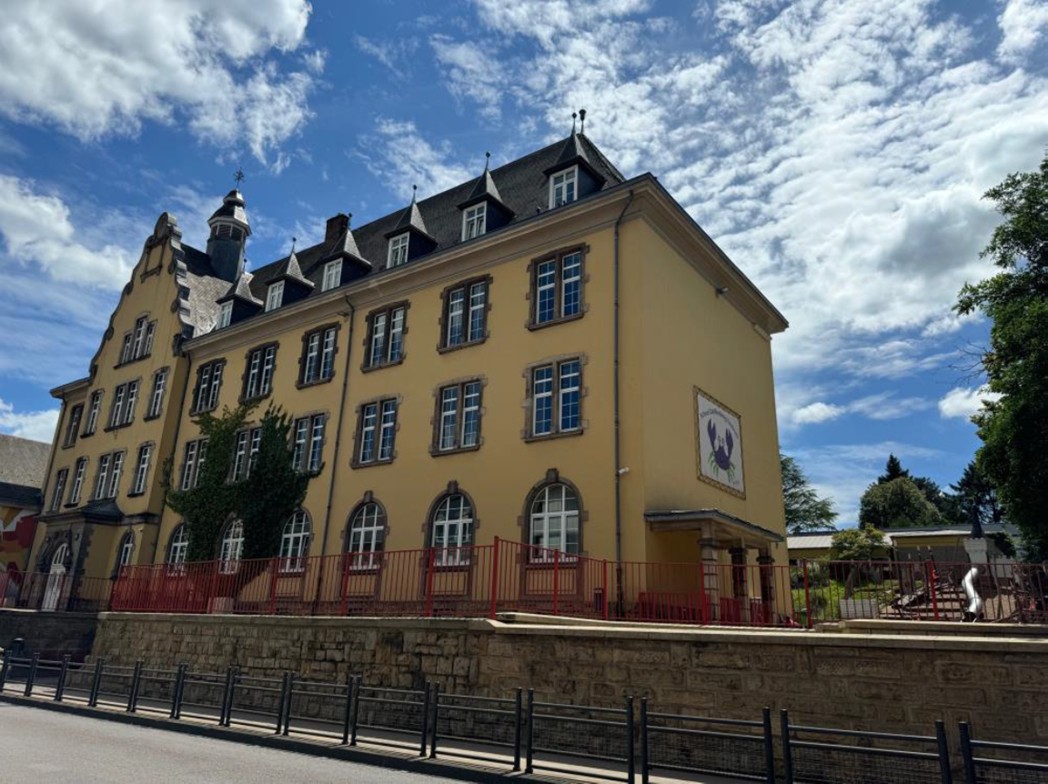Introduction
The City of Differdange is implementing a 100 m² vertical garden on a school building in the heart of the city—one of Luxembourg’s most urbanised heat islands. This pilot project, part of the PRO-SUD regional platform, aims to test urban greening solutions with strong political backing and support from the Ministry of Spatial Planning.
The green wall is designed to address urban heat stress, improve biodiversity, and enhance social cohesion, particularly in an area with limited green infrastructure and a fragmented landscape. However, challenges such as adapting the installation to a protected building, ensuring long-term maintenance, and engaging a diverse local community must be carefully managed.
This report outlines the opportunities, challenges, and strategies for maximising the impact of the Differdange green wall pilot.
Challenges and Constraints
Technical and Structural Limitations
The selected school building has a protected status, which imposes constraints on the installation method, materials, and structural modifications required for the vertical garden.
Community Engagement and Social Diversity
Differdange has a socially diverse population, requiring inclusive engagement strategies to encourage participation and long-term stewardship of the green wall.
Rising Costs and Maintenance Demands
- Initial installation costs may fluctuate due to increasing material and labour expenses.
- Long-term maintenance of the vertical garden requires a sustainable funding model and ongoing technical support.
Opportunities and Strategic Approaches
Strengthening Community Engagement
To ensure the green wall’s success, the project will involve the local community, students, and school staff in its design, implementation, and maintenance. This will:
- Foster social cohesion by creating shared responsibility for urban greening.
- Raise awareness about climate adaptation and biodiversity.
- Provide educational opportunities for students on sustainability topics.
Exploring Smart City Solutions
The pilot will leverage digital monitoring technologies to track the green wall’s environmental benefits and guide future greening projects:
- Temperature and humidity sensors will measure the cooling impact.
- Biodiversity tracking tools will assess the increase in plant and insect life.
- Data dashboards will provide real-time insights for future urban greening initiatives.
Expanding Regional Cooperation
The Differdange pilot serves as a test case for the wider PRO-SUD regional platform, facilitating:
- Knowledge transfer to other municipalities in the region.
- Replication of best practices across post-industrial cities.
- Stronger climate governance through collaboration with national and regional stakeholders.
Ensuring Long-Term Viability
To sustain the project beyond its initial phase, Differdange will develop a comprehensive maintenance strategy, including:
- Funding models (e.g. public-private partnerships, municipal budgets).
- Job creation opportunities through local maintenance teams.
- Integration with broader city climate policies to secure long-term investment.
Conclusion and Next Steps
The Differdange green wall pilot represents an innovative approach to urban climate adaptation, combining green infrastructure, technology, and community participation. Despite challenges, the city’s commitment to sustainability, strong political support, and regional collaboration position this project as a model for other post-industrial cities.

Image: The Differdange Green Hub Pilot Area
Next steps include:
- Finalising technical adaptations to comply with the building’s protected status.
- Launching community engagement initiatives to ensure local involvement.
- Monitoring environmental and social impacts to guide future greening efforts.
This pilot will be closely documented, serving as a blueprint for similar initiatives across Luxembourg and beyond. The transformation of Differdange’s urban landscape from grey to green will demonstrate the potential of nature-based solutions in creating resilient, liveable cities.